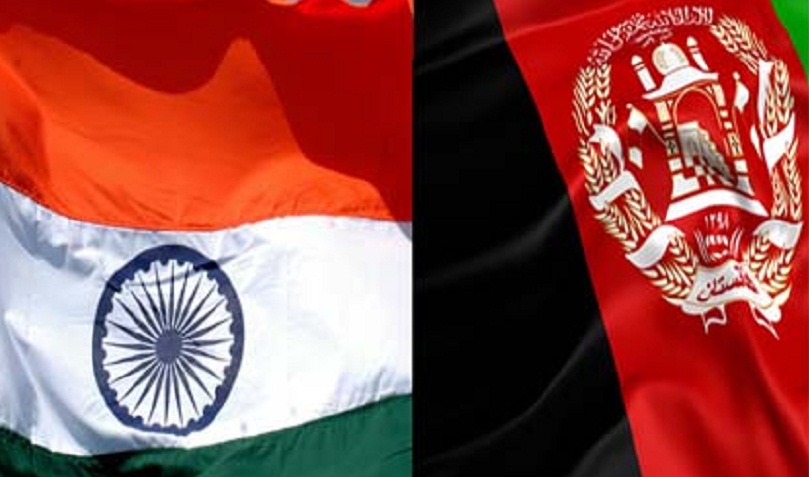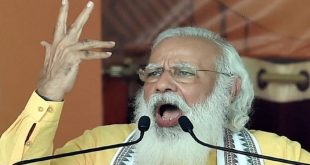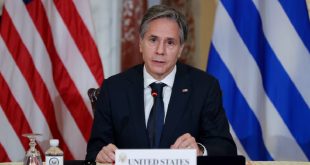If New Delhi chooses not to act as a bridge between Washington and Kabul, it will have to shoulder more responsibilities in Afghanistan on its own, for which it is unprepared.
August has been a month of interesting developments that could help fashion a new role for India in countering terrorism in Afghanistan. First, General John Nicholson Junior, commander of Resolute Support Mission and US Forces Afghanistan, visited India earlier this month and threw his weight and backed Afghanistan’s request for more helicopter gunships from India. Afghanistan’s army chief, General Qadam Shah Shahim, is also expected to raise this issue when he visits India in the last week of August.
There were significant developments on the political front too. Former Afghan President Hamid Karzai visited India in the second-half of August (his fourth visit in the last two years) and gave a string of interviews backing Prime Minister Narendra Modi’s reference to Balochistan in his Independence Day speech. Karzai’s emphatic comments regarding the reference to Balochistan come at a time when his country’s National Unity Government (NUG) is in paralysis and there is a chance that the arrangement may unravel by the end of September.
These developments hint at a changed political landscape with regard to Afghanistan. Nicholson’s specific demand from India for Russian-made helicopters is the culmination of a shift in the US mindset on Afghanistan. Just a few months ago, the US was wary of working with India in Afghanistan, lest it infuriate the Pakistani establishment. But things changed earlier this year when the US-Pakistan relationship started to sour. The US defence department withheld $300 million in aid from the Coalition Support Fund (CSF) on the grounds that Pakistan had not been able to deliver on its assurances to end terror in Afghanistan.
Two other incidents, which took place before the decision to withhold aid was taken, also worsened Pakistan’s case. First, French authorities filed terror charges against a Pakistani citizen, suspected of being a bomb-maker for the Lashkar-e-Taiba (LeT), in connection with the November terrorist attacks in Paris. Second, Taliban chief Mullah Mansour was killed in a drone strike near Quetta earlier this year, marking a new low for Pakistan.
The drone strikes came in the backdrop of the limited success of the Quadrilateral Coordination Group meetings — a Pakistan-led initiative that promised to end terrorism in Afghanistan. It now appears that many states, including China and the US, are on the lookout for other options where Afghan security is concerned. There is also lingering suspicion in Washington that there could be more duplicity from Islamabad in the coming months, particularly at a time when the Obama administration is in its lame duck phase. This period could go on for another year or so after that as the new administration finds its feet, effectively putting Afghanistan on the back-burner for some time.
In the current situation where the US is looking for Indian support in Afghanistan, the key questions before the Indian government are: how far do Indian and American interests align on Afghanistan’s fragile security and political situation? And how should India respond to this outreach by the US government?
One way to analyse the statement on India-US collaboration is to look at the outcomes that the two countries hope to achieve in Afghanistan. These outcomes can further be divided into two types: desirable and undesirable. In cases where both India and US find the outcomes desirable (or undesirable), their interests will align and hence cooperation on those fronts will be easier. On the other hand, the cases where desired outcomes for one side are met with undesirable outcomes for the other will create points of tension and impede collaboration. In such situations of possible conflict, the Afghanistan government’s opinion could be the sole deciding factor.
Likely areas of cooperation
A strengthening of the Afghan National Defence and Security Forces (ANDSF) is a desired outcome for all three states — the US, India and Afghanistan. This is also where the US and Afghanistan want India to weigh in immediately. A major reason for this urgency is that there is a broad consensus across political formations in the US that the war on terror in Afghanistan is over — the chances that an attack from Afghanistan can hurt the US remain slim in the short term. Thus, the US is looking for other partners that can take up greater responsibility on the security front, which is where India enters the picture.
A positive Indian response in this area is a win-win-win situation. Besides strengthening air power, India can also empower the ANDSF with other force multipliers. India can further help in building the Afghan Air Force’s capacity by ramping up pilot training for light aircraft and helicopters and also help in establishing service and repair facilities.
Second, India’s role in building key civilian infrastructure is a positive outcome for everyone involved. The Chabahar port is a key Indian initiative that needs sustained effort to develop it into a viable alternative for Afghanistan’s external trade, effectively displacing Karachi as the port of choice. Going further, education is another sphere where a joint US-India initiative could do well – be it in publishing text books or complementing the American University in Kabul.
The university, the country’s first private non-profit institution of higher learning is in a precarious situation too. On August 8, two professors were kidnapped from the university. Although It resumed operations on August 11, the institute came under attack once again on August 24 when gunmen launched a frontal attack on the campus. India can complement the efforts of this embattled yet prestigious institution through online distance learning or student exchange programmes.
The political front remains an under utilised area of cooperation. India’s political connections in Afghanistan could be useful for the US. In the late 1990s, India played an instrumental role in keeping the anti-Taliban resistance alive. Given the present situation and the possibility that warlords might find their way back into Afghanistan’s body politic, it is critical to construct a string of alliances with key political factions. The US has met with limited success in bringing together the pockets of anti-Taliban forces across the country. It is here that India can play a role in helping cobble together an anti-Taliban alliance. The implication for India here is that it needs to expend greater energy on cultivating contacts with key anti-Taliban factions so that they can act as a bulwark against the Pakistan-sponsored Taliban.
Where interests might diverge
The US fears that the forces calling themselves ISIS in Afghanistan could bring a resurgence of terror on US soil. Hence, the US could want Indian support to counter ISIS. On the other hand, India and Afghanistan believe that it is important to focus on the larger enemy at hand – Pakistan-backed Taliban. The so-called ISIS in Nangarhar is in fact just a rump of disgruntled Tehrik-i-Taliban Pakistan members. As such, it is not the biggest of worries for Afghanistan. But the world is focused on this enemy and there’s a risk of it becoming a distraction.
Another point of difference is over the nature of Afghanistan’s future government. September 30 is supposed to be the deadline for the NUG to hold parliamentary elections, enact electoral reforms, and amend the constitution to create the position of prime minister. None of these changes seem likely to happen and there is a real chance that the NUG arrangement might collapse.
Given the faltering status of the present dispensation, it appears possible that Karzai will make another bid to return to power in one capacity or the other. While this may be an option welcomed by the Afghans, this will not be to the US’s liking. The issue of instituting a prime ministerial position to replace the current ad-hoc arrangement of a CEO in the NUG is also likely to cause friction. While India might welcome a stronger role for the prime minister, in a structure similar to its own, the US is more at ease with investing power in the office of Afghanistan’s president.
Cooperation the only option?
There could also be other issues that fall in this matrix of cooperation between India and the US in Afghanistan. Eventually, this bilateral cooperation rests on maximising the gains in areas where their interests converge and proactively managing each other’s concerns where they don’t.
Finally, the most important stakeholders in this arrangement are the Afghans themselves. Afghanistan’s elite remain favourably inclined towards the US and they, particularly those who live in urban areas, would like the US to continue maintaining its presence in Afghanistan. Afghans also remain positively inclined towards India and would welcome any move by India and the US to synergise their efforts in the war-torn country.
The US still remains the most influential geopolitical actor in Afghanistan, but one that is in a mode of consolidation. If India lets go of this chance to act as a bridge between the US and Afghanistan, the US could find its options further constrained. In such a case, India would then have to shoulder more responsibilities in Afghanistan on its own, a situation that the country is underprepared for.
Anand Arni and Pranay Kotasthane work with the Geostrategy Programme at Takshashila Institution, a Bengaluru-based think tank.
 Afghanistan Times
Afghanistan Times




